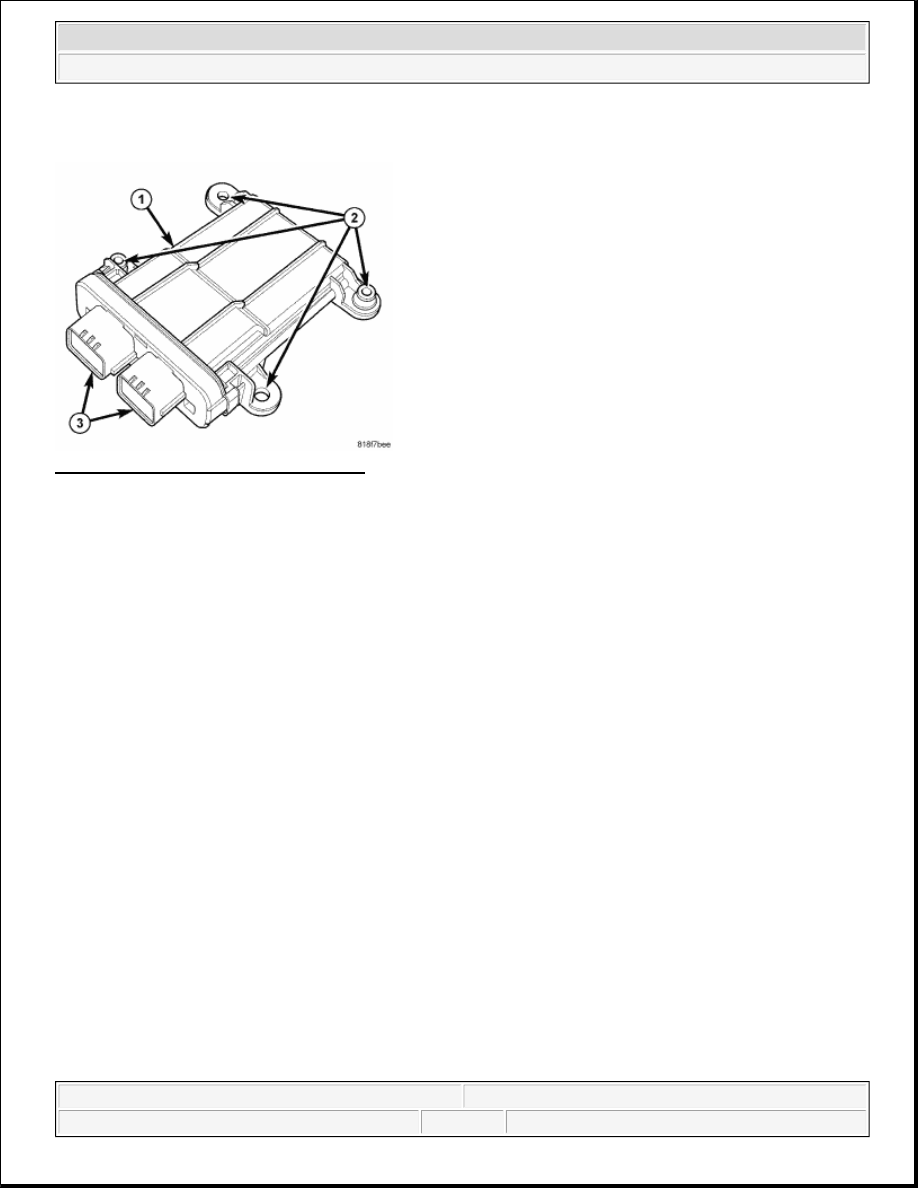Dodge Nitro. Manual - part 240

OCCUPANT CLASSIFICATION MODULE
Fig. 46: Occupant Classification Module
Courtesy of CHRYSLER LLC
The Occupant Classification Module (OCM) (1) is secured with two screws to a stamped metal bracket on the
inboard passenger side front seat riser beneath the seat cushion. Concealed within a hollow in the center of the
molded plastic OCM housing is a microprocessor and the other electronic circuitry of the module. The module
housing is sealed to enclose and protect the internal electronic circuitry.
Four mounting tabs (2) and two connector receptacles (3) are integral to the OCM housing. The two mounting
tabs designed to accept self tapping screws are used to secure the module to the mounting bracket, while the
remaining two mounting tabs are unused in this application. The connector receptacles contain terminal pins
that connect the OCM to the vehicle electrical system through dedicated take outs and connectors of the
passenger side front seat wire harness.
The OCM and all of the other components of the Occupant Classification System (OCS) including the
passenger side front seat, the seat weight sensors, and the seat adjusters, cushion, back, frame, foam, springs,
and wiring harness are a factory-calibrated and assembled unit. Any time any one of these components is
removed or replaced for any reason, the OCM must be re-calibrated using a diagnostic scan tool, the Occupant
Classification Seat Weight special tool, and the Occupant Classification System Verification Test. Refer to the
appropriate diagnostic procedures.
The OCM cannot be adjusted or repaired and, if damaged or ineffective, it must be replaced. The OCM
software is flash programmable. A non-calibrated OCM is available for separate service replacement.
OPERATION
OCCUPANT CLASSIFICATION MODULE
The microprocessor in the Occupant Classification Module (OCM) contains the Occupant Classification System
(OCS) logic circuits. The OCM uses On-Board Diagnostics (OBD) and can communicate with other electronic
modules in the vehicle as well as with the diagnostic scan tool using the Controller Area Network (CAN) data
2007 Dodge Nitro R/T
2007 RESTRAINTS Service Information - Nitro